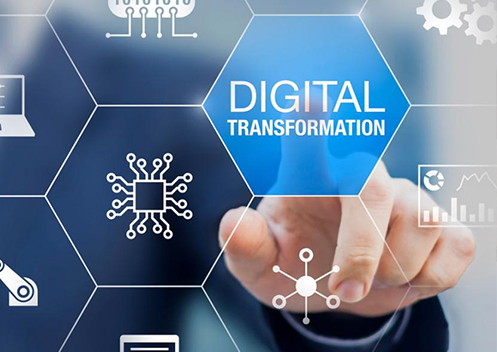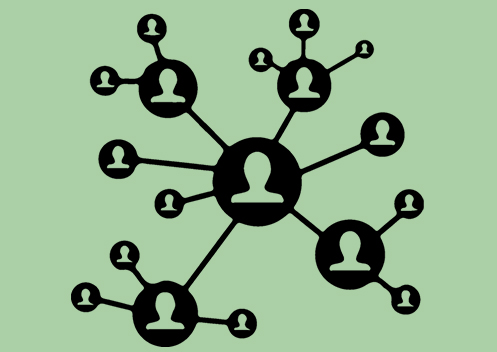The Latest Trends on E-Learning
August 3, 2023
The implementation of digitalization in education has become the driving force in the academic world, as students prefer e-learning, a teaching system that is carried out through the Internet or with a connection to the network. In addition, it offers many advantages for both students and teachers:
– Flexibility: Due to the multitude of options offered by technology, training through e-learning is flexible and customizable to suit the needs of all parties involved: training centers, students, and instructors. In addition, this mode of training is generally not subject to timetables, allowing the participants in an activity to interact from anywhere in the world, eliminating any geographical barriers that may remain. Thus, the students determine the pace of progress and manage their time, which results in more active learning.
– Compatibility: Due to the flexibility mentioned above, both students and instructors can combine their academic activities with their work and their home life.
– Design: Without a great deal of technical knowledge, many e-learning platforms and applications allow courses and learning material to be designed in an attractive and effective format.
– Communication channels: Teachers and students share communication channels even outside teaching hours, thus enhancing participation, and strengthening the educational link.
– Follow-up: Most e-learning tools allow us to follow the progress and growth of students with visual tools such as tables, graphs, and percentages. In addition, they also have the possibility of verifying their participation in forums, the time spent on the platform, making precise evaluations, or knowing their degree of satisfaction with the training activity.
Higher education schools find it resourceful to follow the main trends for 2023, as e-learning is fundamental in the educational world.
For instance, many academics have pointed out the need for assessment systems to have anti-plagiarism measures. To this end, very simple or multiple-choice answers should be avoided. For example, the University of Exeter (UK) includes data analytics in exams by conducting customized tests.

A growing number of educational institutions are also using data analytics for student activity to enhance the e-learning experience and promote academic success. For example, the University of Maryland (Baltimore County) uses analytics to create graphs and show information more visually to the student.
On the other hand, rapid technological progress and growing socio-economic challenges force people to train constantly to adapt quickly to changes and keep abreast of the latest developments in the professional sector to which they belong. From the point of view of educational institutions, they also have the duty to update and offer training while providing new qualifications, quickly enabling students to adapt themselves to their environment. To this end, “micro-qualifications” have emerged, which are shorter and more specialized than a traditional diploma, degree, or certificate and enable the students to obtain the appropriate knowledge in a shorter period. Generalist training courses provide a lot of material and give way to more intensive courses focused on learning specific skills and abilities that enable students to exercise new professions.
In addition, immersive learning is also sought. A term that has been widely used in recent months is “metaverse”. Although its impact on education is still unknown and few initiatives are focused on this environment, many doubts arise in higher education institutions regarding the not-too-distant future: What will the educational “metaverse” be like? Will virtual reality devices be used? What will it contribute to education? What pedagogical possibilities will it have? The applications are expected to be endless. From “face-to-face” classes in a virtual world, to training and simulating the use of applications. In its day, Second Life (a virtual community launched in June 2003) did not achieve the expected success because the speed of connections at that time did not allow a satisfactory experience. However, this barrier seems to have been overcome with the democratization of devices and the use of 5G technology.
However, the socio-affective aspects of the students and due to the emergency transition, that took place between face-to-face and remote learning during the pandemic, students experienced stressful situations related to format, focus, and workload. According to studies conducted after the pandemic, learners found it difficult to keep their attention and balance their workload during confinement. To avoid these situations, e-learning is moving towards a model in which the learner is at the center of the educational experience and how emotional factors play a key role. More and more centers are opting for this type of pedagogy. In fact, many universities have encouraged their students to use emotional support applications. An example of this is the University of Michigan, which recommends the use of SilverCloud to its students to manage stress and anxiety.
Finally, the rapid development of artificial intelligence based on language recognition and massive text processing using computer techniques has made it possible to create content using tools such as ChatGPT. The use of this type of technology can be applied in all sectors, including education. This raises many questions and debates, such as: What impact will it have on certain professions? What is the quality of the texts generated? How does it affect copyright?
You can find an extension of this topic in the article “The Application of ChatGPT in higher education” on this website.






